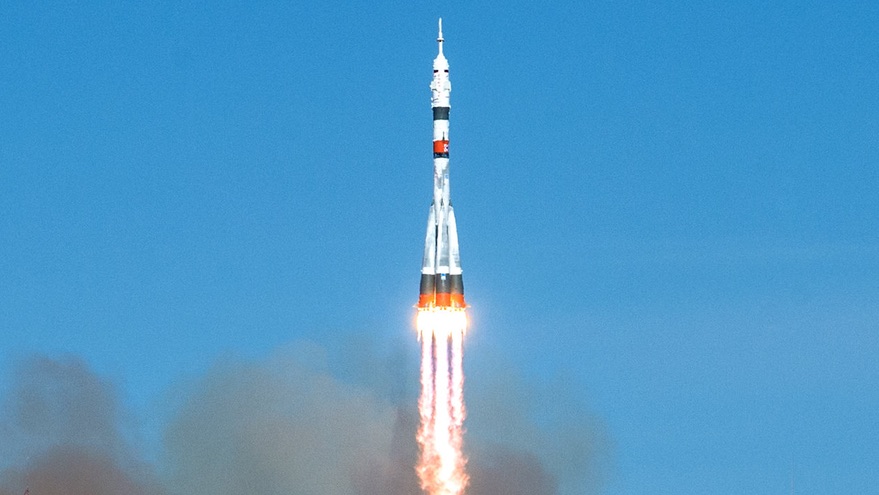Products You May Like
WASHINGTON — A Soyuz spacecraft launched to the International Space Station Oct. 14 on what will likely be the last mission where NASA pays Russia for a seat, but not necessarily the last time NASA astronauts fly on the spacecraft.
The Soyuz-2.1a rocket lifted off from the Baikonur Cosmodrome at 1:45 a.m. Eastern, placing the Soyuz MS-17 spacecraft into orbit nine minutes later. The spacecraft, making an “ultra-fast” two-orbit approach, docked with the station’s Rassvet module at 4:48 a.m. Eastern.
The Soyuz brought to the station NASA astronaut Kate Rubins and Roscosmos cosmonauts Sergey Ryzhikov and Sergey Kud-Sverchkov for a six-month stay. The three join the current ISS crew of NASA’s Chris Cassidy and Roscosmos’ Anatoly Ivanishin and Ivan Vagner, who will return to Earth on their Soyuz MS-16 spacecraft Oct. 21.
Rubins was added to the crew in May when NASA announced it was purchasing a final Soyuz seat from Roscosmos for $90.25 million. NASA described the purchase as an insurance policy of sorts, ensuring “the agency keeps its commitment for safe operations via a continuous U.S. presence” as commercial crew vehicles finally enter service.
NASA officials had stated for months leading up to that May announcement that it was in talks with Russia not just for that seat, but potentially a second seat for a mission launching in the spring of 2021. Since the successful Demo-2 commercial crew mission to the ISS by SpaceX’s Crew Dragon spacecraft this summer, though, NASA has not expressed any public interest in buying future Soyuz seats.
The agency now expects commercial crew missions to handle its needs to transport astronauts to and from the station. The SpaceX Crew-1 mission, with three NASA astronauts and one from the Japanese space agency JAXA on board, is scheduled for launch in early to mid November. The Crew-2 mission, with astronauts from NASA, JAXA and the European Space Agency, will follow in the spring of 2021.
Boeing’s CST-100 Starliner, whose development has been delayed by issues during an uncrewed test flight last December, will fly a crewed test flight with three NASA astronauts on board no earlier than next June, after a second uncrewed test flight in December or January. That would allow the vehicle to begin routine astronaut transport missions by the end of 2021.
That does not mean, though, that NASA astronauts will never fly on Soyuz spacecraft again. NASA has long talked about its desire for “mixed crews”, with American astronauts flying on Soyuz spacecraft while Russian cosmonauts would fly on commercial crew missions under a barter arrangement. Doing so would ensure there is always at least one American and one Russian on the station in the event Soyuz or commercial crew vehicles are grounded for an extended period.
Roscosmos, though, has not yet agreed to mixed crews. At an ISS Advisory Committee meeting in Mars, committee chairman Tom Stafford said that his Russian counterparts told them that they were awaiting successful U.S. commercial crew flights before agreeing to allow cosmonauts to fly on those vehicles.
No Russian cosmonauts have been assigned to any commercial missions to date. The next long-duration Soyuz mission to the ISS, scheduled for launch in April 2021, is expected to have a crew of three Roscosmos cosmonauts.
NASA Administrator Jim Bridenstine said at a Sept. 29 briefing about the upcoming Crew-1 mission that he was still pursuing mixed crews. “We still believe that it’s critically important,” he said. “I think there’s broad agreement that, if both countries want to maintain a permanent presence on the International Space Station, that is the end state that we need to achieve.”
“We’re in the process of coordinating and implementing an agreement to work towards that,” added Kathy Lueders, NASA associate administrator for human exploration and operations. “Right now it’s about which mission do we implement that, but as far as I’m concerned, the sooner the better.”
